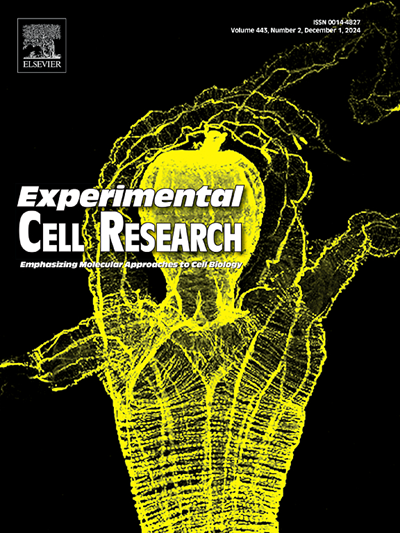Potential role of Sigma-1 receptor inhibition and ER stress-related pathways in upregulating definitive endoderm markers in human embryonic stem cells
IF 3.3
3区 生物学
Q3 CELL BIOLOGY
引用次数: 0
Abstract
Endoplasmic reticulum (ER) stress and unfolded protein response (UPR) participate in stem cell proliferation, differentiation, and apoptosis. Sigma-1 receptor (S1R) is a unique ER chaperon protein that regulates ER stress and UPR. Here, we examine the effects of S1R inhibition on pluripotency and differentiation of human embryonic stem cells (hESCs). hESCs were treated with different doses of an S1R inhibitor (BD 1047), and we investigated the expressions of different pluripotency and lineage-specific genes. The BD-treated hESCs showed increased SRY-box transcription factor 17 (SOX17) expression [definitive endoderm-specific protein], and reductions in NANOG expression and in the number of alkaline phosphatase (ALP)-positive colonies. In silico gene expression analysis of three datasets that contained the hESCs-derived DE samples (GSE98324, GSE63592, GSE52658) was performed to investigate the ER stress-related gene expression patterns during DE differentiation. In silico analysis revealed that UPR-related genes upregulated during DE differentiation and CCL2 was the only gene present in all three DE datasets. qRT-PCR and immunostaining showed that CCL2, eIF2A, ATF4, XBP1, GRP78, DDIT3, DNAJB9, and PDIA5 which are UPR related marker genes were all upregulated in both the BD-treated hESCs and female and male hESC-derived DE cells. The results of this study suggest possible roles for S1R, ER stress-related genes, and the CCL2 pathway during differentiation of hESCs into DE. These potential new targets may improve the efficiency of protocols used to differentiate endodermal lineages.
Sigma-1受体抑制和内质网应激相关通路在人胚胎干细胞最终内胚层标志物上调中的潜在作用
内质网(ER)应激和未折叠蛋白反应(UPR)参与了干细胞的增殖、分化和凋亡。Sigma-1受体(S1R)是一种独特的ER伴侣蛋白,可调节ER应激和UPR。我们用不同剂量的S1R抑制剂(BD 1047)处理人类胚胎干细胞(hESCs),并研究了不同多能性和系特异性基因的表达。经 BD 处理的 hESCs 显示 SRY-box 转录因子 17 (SOX17) [明确的内胚层特异性蛋白] 表达增加,NANOG 表达和碱性磷酸酶 (ALP) 阳性菌落数量减少。研究人员对三个数据集(GSE98324、GSE63592、GSE52658)中包含的hESCs衍生的DE样本进行了基因表达分析,以研究DE分化过程中与ER应激相关的基因表达模式。qRT-PCR和免疫染色显示,CCL2、eIF2A、ATF4、XBP1、GRP78、DDIT3、DNAJB9和PDIA5等UPR相关标记基因在经BD处理的hESC和雌雄hESC衍生的DE细胞中均出现上调。本研究的结果表明,S1R、ER 应激相关基因和 CCL2 通路可能在 hESCs 向 DE 的分化过程中发挥作用。这些潜在的新靶点可能会提高用于分化内胚层系的方案的效率。
本文章由计算机程序翻译,如有差异,请以英文原文为准。
求助全文
约1分钟内获得全文
求助全文
来源期刊

Experimental cell research
医学-细胞生物学
CiteScore
7.20
自引率
0.00%
发文量
295
审稿时长
30 days
期刊介绍:
Our scope includes but is not limited to areas such as: Chromosome biology; Chromatin and epigenetics; DNA repair; Gene regulation; Nuclear import-export; RNA processing; Non-coding RNAs; Organelle biology; The cytoskeleton; Intracellular trafficking; Cell-cell and cell-matrix interactions; Cell motility and migration; Cell proliferation; Cellular differentiation; Signal transduction; Programmed cell death.
 求助内容:
求助内容: 应助结果提醒方式:
应助结果提醒方式:


